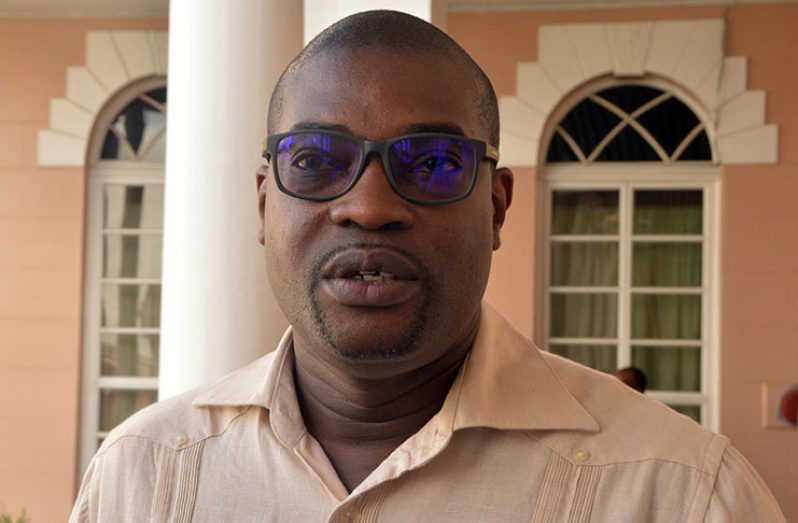By Tash Van Doimen & Dr. Terrence Blackman – OilNOW
In the latest installment of the enlightening web series, “Transforming Guyana,” which aired on Wednesday, September 13, 2023, through a partnership between the Guyana Business Journal (GBJ) and the Caribbean Policy Consortium (CPC), the critical nexus between infrastructure development and equitable wealth distribution came to the forefront. Season II Episode IV, titled “Infrastructure Development and the Emerging Guyanese Oil and Gas Economy,” delved deeply into the intricate landscape of Guyana’s infrastructure considerations, encompassing its indispensable role in conjunction with the burgeoning oil and gas sector. The episode further explored the pressing need to address infrastructure gaps and promote sustainable, inclusive development urgently.
This episode was enriched by the insights shared by two distinguished guests: David Patterson, former Minister of Public Infrastructure of Guyana and shadow Minister on Oil and Gas, and Arthur Deakin, Director of Energy at the Americas Market Intelligence (AMI).
The panel discussion commenced with a comprehensive overview of Guyana’s current infrastructure landscape, presented by Arthur Deakin. In his illuminating presentation, Deakin underscored Guyana’s exceptional status as one of the fastest-growing new oil provinces in the last decade. His assertion that “Guyana is the fastest-growing new oil province in the last decade, by far” resonated with the audience, emphasizing the nation’s remarkable ascent in the global oil arena. This meteoric rise naturally prompted heightened expectations regarding the visible benefits that would accrue to the country.

Deakin pointed out that these anticipated benefits should encompass fundamental necessities, such as access to clean water, reliable electricity, and the realisation of advanced infrastructural developments. However, he concluded his presentation on an optimistic note, dispelling concerns that the absence of such infrastructure today indicates a lack of desire. Instead, he emphasized that the key to realising these ambitions lies in efficient implementation guided by a well-defined plan.
David Patterson, bringing his extensive experience in both infrastructure and resource management to the fore, seamlessly transitioned the discussion from a purely infrastructural standpoint to a broader resource context. Patterson passionately advocated for the urgent development of a National Infrastructure Plan; a comprehensive blueprint capable of effectively addressing the inadequacies Guyana is facing despite its exponential growth. These inadequacies spanned critical areas, such as labour, materials, and the availability of land, particularly concerning the oil and gas sector.

Patterson convincingly argued that “with a clear plan, investors can have direction to make informed decisions,” an imperative consideration given the protracted timelines typically associated with infrastructure projects, which often span years and are not easily transferable. In his articulate presentation, Patterson delineated several vital areas ripe for improvement, including the strategic development of a deep-water port, the formulation of coordinated plans for a potential gas industry, the creation of a conducive business environment, the enactment of prudent legislation, such as enforceable building regulations, and the modernisation of immigration policies. Additionally, he highlighted the pivotal role of fiscal incentives in steering Guyana’s trajectory toward equitable wealth distribution.
Patterson’s concluding remarks emphasized Guyana’s commendable environmental preservation efforts and the indispensable role of international collaboration and local expertise in the meticulous design and precise implementation of context-specific projects. This synergistic approach, he emphasized, would be instrumental in achieving Guyana’s vision of prosperity.
Guyana’s oil and gas ascent has been remarkable. Infrastructure development must ultimately be viewed as a catalyst for distributing that oil wealth to benefit the largest possible number of citizens—now and in the future. A sustainable consensus must emerge among Guyana’s socioeconomic and political elites around the critical areas for Guyana’s infrastructure development. Most importantly, environmental preservation and local-regional-global collaborations must be the cornerstones of this development process.
About the authors
Tash Van Doimen was born and raised in Georgetown, Guyana. She holds a master’s degree in development policy from the KDI School of Public Policy and Management with a double major in International and Sustainable Development. She used this opportunity to examine Guyana’s oil industry and the nexus between economic development and environmental implications. Ms. Van Doimen began her journalism career, covering hard news and featured articles. In 2015, the Theatre Guild awarded her for ‘Consistent Coverage of the Arts in the Media.’ The same year, Ms. Van Doimen began her career as a Foreign Service Officer, representing Guyana on multiple forums and speaking on various issues aligned with Guyana’s Foreign Policy.
Dr. Terrence Richard Blackman, associate professor of mathematics and a founding member of the Undergraduate Program in Mathematics at Medgar Evers College, is a member of the Guyanese diaspora. He is a former Dr. Martin Luther King Jr. Visiting Professor at MIT and a Visitor to The School of Mathematics at The Institute for Advanced Study. Dr. Blackman has previously served as Chair of the Mathematics Department and Dean of the School of Science, Health, and Technology at Medgar Evers College, where he has worked for almost thirty years. He graduated from Queen’s College, Guyana, Brooklyn College, CUNY, and the City University of New York Graduate School. He is the Founder of the Guyana Business Journal & Magazine.



